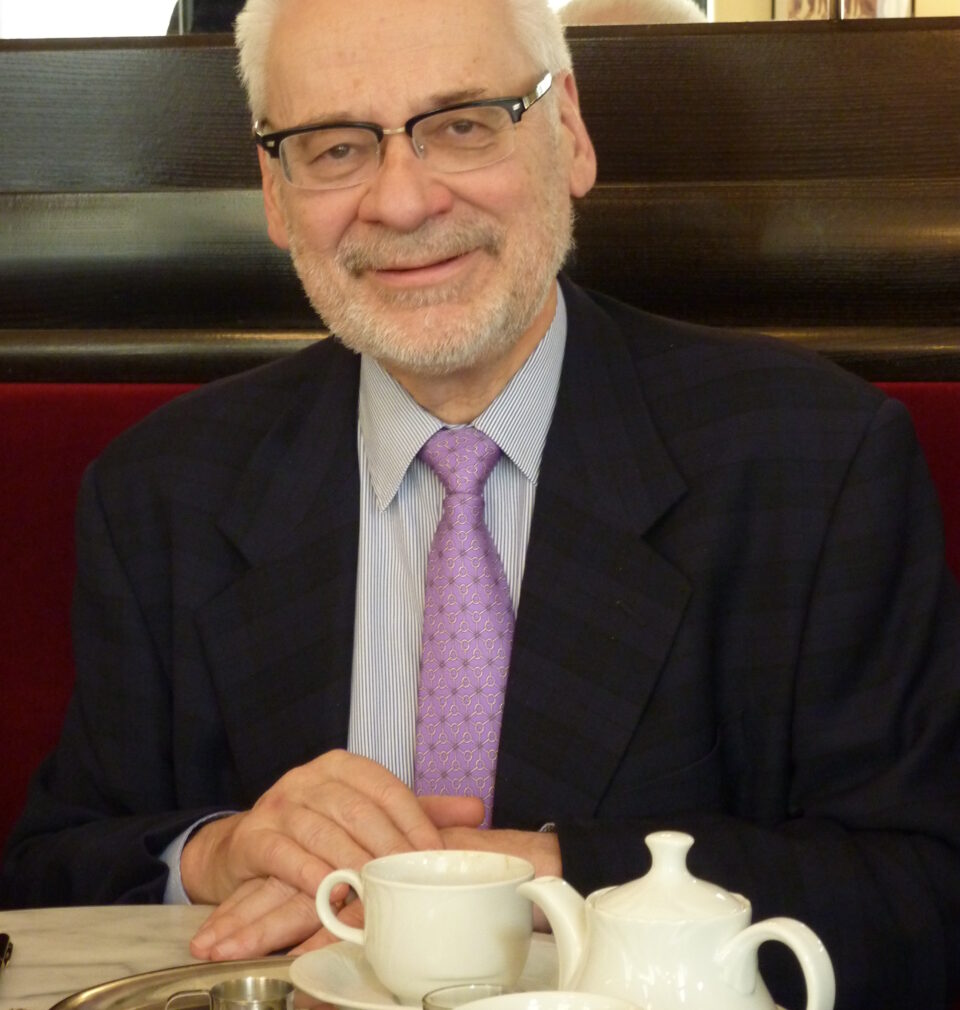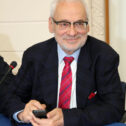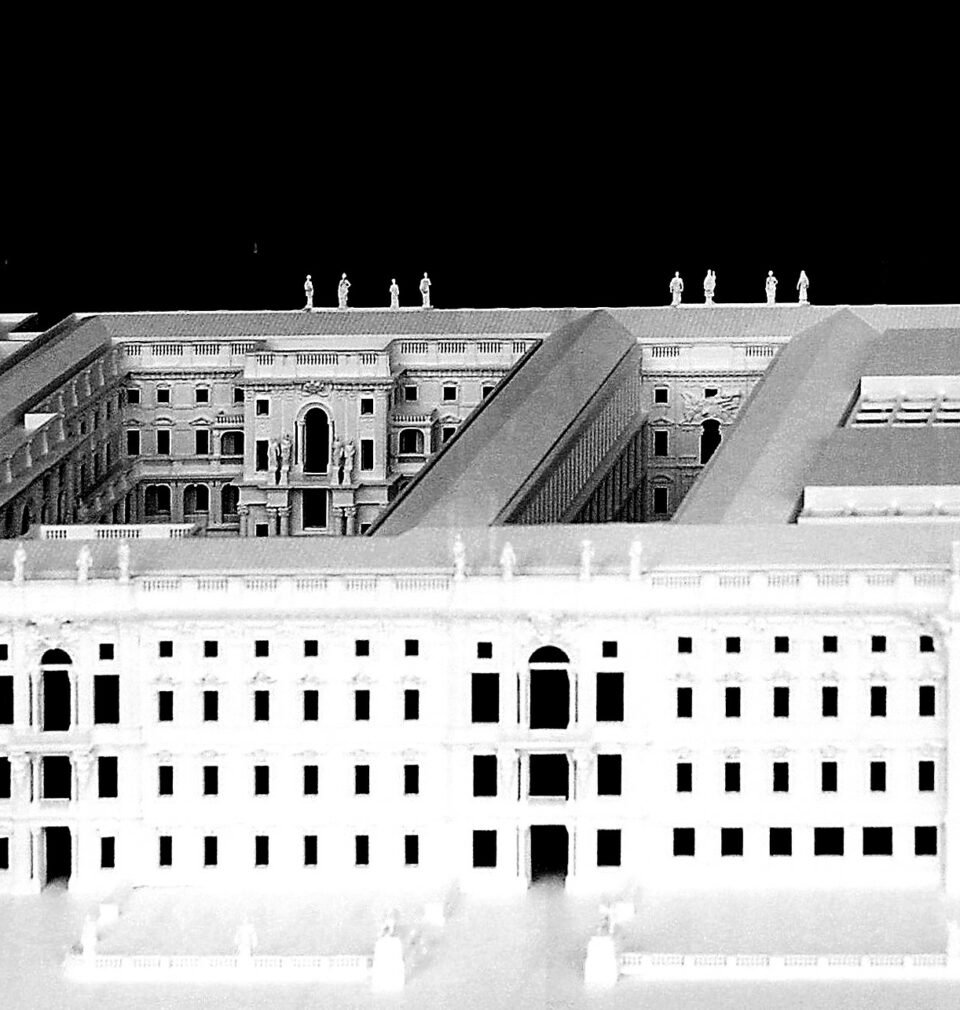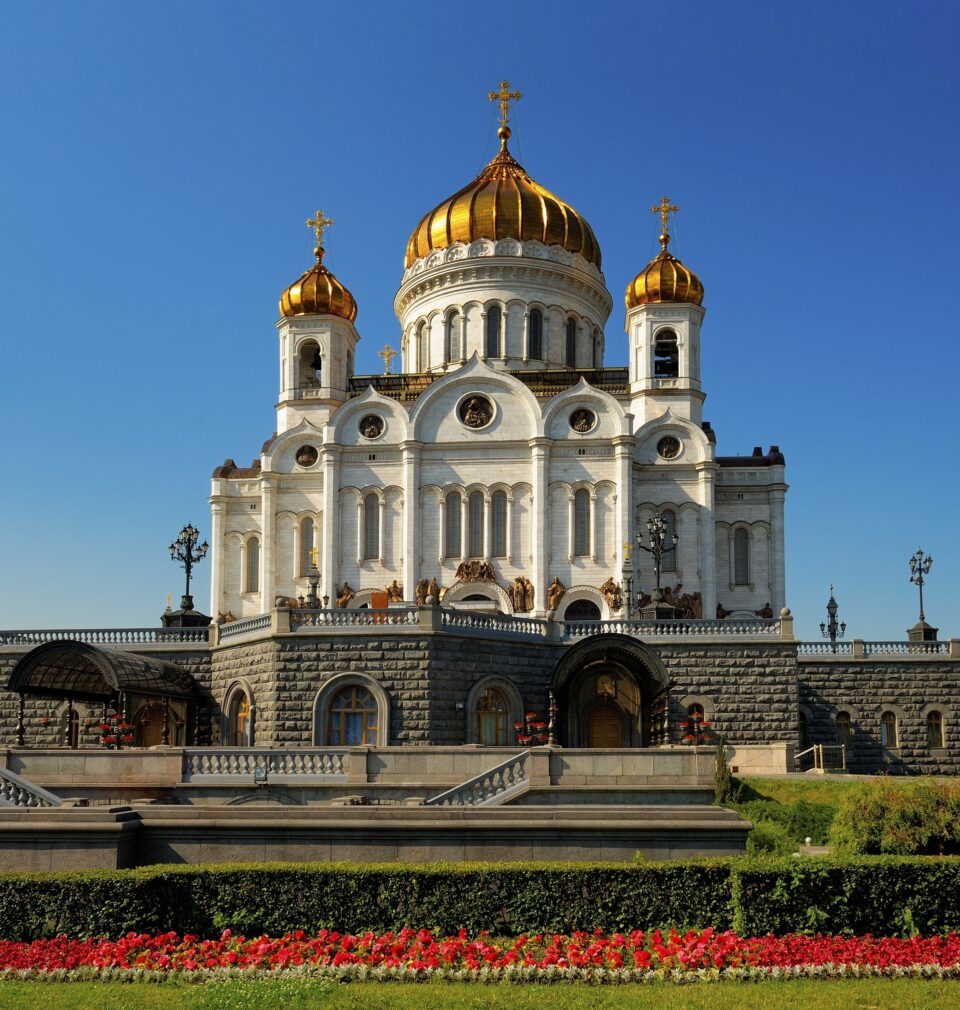
The City and the Museum
Mitteleuropa Still Needed
Publication: 17 August 2021
TAGS FOR THE ARTICLE
TO THE LIST OF ARTICLESIn 2011 the Vienna MuseumsQuartier (MQ)[1], the largest cultural investment in Austria, celebrates its tenth anniversary. It is a crucial point of the city – not only a tourist attraction, but also a place where the Viennese spend their leisure time. Despite their universal perspective, the programmes of particular institutions reveal a strong attachment to the idea of Central Europe. I amtalking to Dr. Erhard Busek about the Mitteleuropa project at the dawn of the second decade of the twenty-first century, as seen from the viewpoint of the MQ. Our conversation takes place in Café Griensteidl at Michaelerplatz, continuing the tradition of one of the oldest Vienna cafés.
Katarzyna Jagodzińska: In the 1980s a fashion for Central Europe began. In 1984 Milan Kundera published his manifesto of Central Europe, A Kidnapped Occident or the Tragedy of Central Europe; György Konrád, Václav Havel and many others have written about this region. Behind the Iron Curtain only Vienna consistently supported this conception. We could name, for example, the book Projekt Mitteleuropa, which you published in 1986 with Dr. Emil Brix.
Erhard Busek: It seems to me that the idea of Mitteleuropa conceived in these terms is associated with the figure of the young Claudio Magris. In his Ph.D. thesis entitled Il mito asburgico nella letteratura austriaca moderna (“The Habsburg Myth in Modern Austrian Literature”) he strongly emphasised the common cultural experiences of the nations ruled by the Habsburg monarchy. In a sense he started to overcome the Iron Curtain, just like the intellectuals you mentioned, and this also found its place in this idea. In my view, we had a kind of meta-Europe then – although we were divided, we had a lot in common with each other. Since that time, it has been thoroughly investigated by writers, philosophers or artists. I feel that this is the best way of describing Mitteleuropa, for it constitutes a cultural blend. It is to a large extent concentrated along the banks of the Danube and it forms a kind of cultural spectacle. So it is not a political concept. Here, in Austria, I have been constantly accused of wanting to resurrect the Habsburg monarchy. This is completely absurd, but the common experience from that time, whether we define it as a Habsburg era or not, has played a very important role.
K.J.: To what extent did the concept of Mitteleuropa arise from your opinions as an intellectual and to what extent from your position as a Mayor of Vienna?
E.B.: It is impossible to understand Vienna without knowing its history from around 1900. It was the last time when Vienna was inhabited by a multicultural society, as we would call it today, a society boasting magnificent achievements in painting, applied arts, music, literature and so on. Today we still very much depend on this past and it also forms the background for the experiences of our neighbours, although ironically it is sometimes more visible in the neighbouring countries than in Vienna.
K.J.: Vienna from around 1900 is strongly present in the MuseumsQuartier – the artistic narrative in the Leopold Museum and the architectural narrative in the Architekturzentrum both take it as their starting point.
E.B.: For Vienna’s identity was founded in this period. Sometimes it may seem controversial, but it can be very helpful in the context, for example, of immigrants, for these extremely creative times teach us how to live together.
K.J.: Let us dwell for a while on the museum district project, for it is an investment which in a large measure combines the theme of the city and of Central Europe, it embodies such terms as creativity and coexistence. It is one of the largest cultural complexes in the world, on the one hand being an “island of museums,” for it is enclosed within the walls of the historic Imperial Stables, and on the other hand it is inscribed in the wider context of the great cultural institutions nearby. When the idea of the MuseumsQuartier was emerging, you served as the Mayor of Vienna and then a minister responsible for museums. Could you say how did this project come about?
E.B.: Our main challenge was the lack of a good museum of modern art – we simply had to build it – and lack of venues for cultural activities, various presentations and cultural events. The Vienna fair had been organised in this area and it seemed it would offer a good cultural venue. The Hofburg is nearby – the courtyard is enclosed only by one wing, the other one was not raised, for the monarchy fell – and then the Maria-Theresien-Platz with the Art History Museum and the Natural History Museum. From the point of view of urban planning the idea was to go beyond that with modern art, to the former Imperial Stables. And, in this way the cultural axis of the capital came into being.
K.J.: In the early 1980s the city planned to turn this area into a shopping centre and a hotel complex. What factors led to culture being chosen instead?
E.B.: Myself and several other people had a strong argument. Because of economic difficulties and political disturbances the First Republic of Austria did not erect a single representative edifice. When we think about the First Republic, there is virtually nothing from the field of culture that we associate with it. Also, after World War II very few important things were created. We like to say in Austria that we live in a Kulturland – a country of culture, but where is it to be seen? It was a serious question. Although it was a difficult period, with people focused on making money, we managed to see the project of a cultural district through. In the field of architecture the original project had to be slightly modified – a tower was to be raised within the complex, not in the centre, but to the side, serving as a visual signal that we are dealing with something different here. We had to face a strong opposition, spurred on especially by the populist media. The very popular Kronen Zeitung was against the idea. But now the newspaper publishes articles underlining the significance of this investment.
K.J.: In your opinion, why has the tower, the so called media and service tower, turned out to be so controversial?
E.B.: The Vienna community is very conservative, too engrossed in the past, and this is why it is so difficult to break new trails. Some people said, for example, that the historic stables should be given over to horses, but what horses? We do not have any horses. It was a similar story with the so-called Loos House across the street from here; now it is a symbol of the early 20th century Modernism. The Emperor Franz Joseph – all my liking for him notwithstanding – insisted that curtains should be hung in the windows of the café we are sitting in, so that he was spared the view of this building. This is how social sensitivities play out.
K.J.: I can only guess the reaction of the Viennese when the decision to turn this building for cultural purposes had been made. Earlier I would have thought that such a project must be enthusiastically received.
E.B.: The enthusiasm was never there. It was a minority project, but I managed to carry it through. The idea of creating the Leopold Museum helped. It is striking that in our museums, regardless of how rich collections they have, virtually everything ends in the times of the monarchy. After Historicism there is nothing. So, as a minister I was very active in trying to acquire the Rudolf and Elisabeth Leopold collection with works by Gustav Klimt, Egon Schiele and many other masters, which filled this gap. Sometimes I have an impression that Schiele is a contemporary young artist, only that he has been dead for almost one hundred years. It only confirms the fact that in this city acceptance for anything takes very long. For ten years we have been observing a huge revival of Gustav Mahler, earlier long absent in opera programmes.
K.J.: Many original plans for the MuseumsQuartier have not been realised: the tower, an underground transport system, which was to relieve the courtyard from car traffic, and two buildings were reduced in height. Also, the list of institutions and exhibitions has changed. How do you assess the whole investment from the perspective of the plans drawn in the 1980s?
E.B.: A number of really good ideas had been put forward in the context of the MuseumsQuartier. And you certainly know that the death rate of good ideas is high. Those which survive must be truly robust. I always wanted to create a museum of ideas which were aborted, did not pass the test of reality. It would be a mirror of every generation, of what was possible, but not realised in a given period. Two museums, Leopold and MUMOK (Museum Moderner Kunst Stiftung Ludwig Wien), are not very high, as a result of protests by a lobbyist, namely an owner of Kieker, a large company selling furniture in Central and Eastern Europe. He lives just behind the MuseumsQuartier and together with the owner of Kronen Zeitung he campaigned for the buildings to be reduced in height, so they would not block the view from his window. So the museums had to descend lower and lower, under the ground. There was also a perhaps more rational argument, namely that the new structures should not be higher than the historic buildings designed by Fischer von Erlach. This opinion was shared by architects representing the conservation of monuments office. For me, the tower would have enlivened this place.
K.J.: What is your opinion the architecture itself?
E.B.: I was not convinced by the arguments of the conservation of monuments office that the façade should be preserved – it is a historic nineteenth-century architecture, but not of outstanding value. This is the first mistake. The other is that architecturally the Leopold Museum is of higher quality than MUMOK. When we look at the MuseumsQuartier as a whole, we see that it is the only strong urban feature around Ringstrasse, in this case along the second ring.
K.J.: And as far as institutions are concerned?
E.B.: The Leopold Museum, MUMOK and Kunsthalle are permanent features of the cityscape. A number of more ephemeral institutions, whose existence is constantly threatened by new challenges, functions around them. The director of the complex, Wolfgang Waldner, is a flexible and very inspired person.
K.J.: The Ortner&Ortner studio, which won the competition for the MuseumsQuartier, is committed to the idea of democracy in architecture. Do you see this democracy in the museum district?
E.B.: My personal feeling is that architecture has nothing to do with democracy. I am a democrat, but I believe that there is no room for democracy in art, for art has to do with taste. The architects from Ortner&Ortner had to overcome many challenges from all sides. The jury, not composed of politicians, but of architects and art historians, chose their design, but later no member of the panel supported it. It was a ludicrous situation.
K.J.: In the introduction to the book on the MuseumsQuartier published in connection with its opening we read: “Through its critical focus the MuseumsQuartier concentrates enormous quantities of energy on cultural activity, allowing Vienna to compete on an equal footing with such European cities as London, Paris, Madrid or Berlin.” Do you believe that these words still hold today, ten years after the opening of the MuseumsQuartier?
E.B.: This is not a question of architecture, but of the activity. It seems to me that what you quoted is partly true, but it can always be even better. Let us not forget that Austria is a small country with a limited potential. If you ask me about the international context, Vienna has a strong position in the area of music. I believe that art takes a backseat – we invest quite a lot in it, but we should be investing even more.
K.J.: Unquestionably, the MuseumsQuartier is part of the Vienna brand name. How do you assess its power?
E.B.: It has a very strong position among the young generation, both in Austria and the outside. When I am abroad, people often speak to me about the MuseumsQuartier. But I think the MUMOK should simply be more active. There are plans to open its branch on the Danube, but they have been put on hold because of the financial crisis. Creating another gallery of this type would be fully justified, for in Austria we are lagging behind as far as modern art is concerned.
K.J.: The MuseumsQuartier is a place where inspirations, ideas and conceptions criss-cross and blend. It is based on open access conceived in very broad terms. Is there room for Mitteleuropa here?
E.B.: Absolutely, but it depends on the people preparing the programme. I believe that the Leopold Museum fulfills this mission very well. In 2009 the MUMOK staged an exhibition called Gender Check. Femininity and Masculinity in the Eastern European Art dedicated to art before and after 1989, later shown in Warsaw. This is how this conception should be put into practice.
K.J.: But wouldn’t you say that there is a general tendency towards standardisation and globalisation, which means going away from the idea of Mitteleuropa?
E.B.: It is true that we are moving towards globalisation.
K.J.: So in one or two decades this idea could be lost from view?
E.B.: It depends. It seems to me that nowadays every country in Europe is first of all looking after itself. This is a time of egoism and defending one’s own interests, arising from the financial and economic crisis. Cross-border projects have proven unsuccessful so far. The European Commission is now working on the EU Strategy for the Danube Region, with the object of bringing the countries on the Danube closer together. And this is nothing other than Mitteleuropa. Such an initiative is useful, especially if we look at the tensions between Hungarians and Slovaks or at Bulgaria and Romania, where you have just one bridge along the border measuring 470 kilometres. The Commission clearly stated that there must be a closer collaboration in the field of culture. This has already been happening in music – for example, this year we are celebrating the 200th anniversary of the birth of Franz Liszt or Liszt Ferenc, a quintessentially Central-European figure. On the other hand, it is easier in music, for no translation is needed.
K.J.: Likewise with the visual arts.
E.B.: Right. But not with literature.
K.J.: And how do you see the possibility of using museums for promoting the Central-European heritage?
E.B.: I am sceptical, for it raises the question of where you should begin and where you should end. And the essence of Central Europe is mingling, blending. Here we would have to define borders, which is very problematic.
K.J.: Has any museum made such an attempt?
E.B.: No. One of the previous governments planned to create a museum of twentieth-century Austrian history, particularly important in the context of the civil war and replacing the monarchy with a republic, but in my view this conception has many limitations. It is a shame that we are not more open to our neighbours. If you ask anyone here about the origins of Franz Liszt, you will hear that he was born in Eastern Austria. For in Austria he is “ours.” But the Hungarians firmly believe that he was a Hungarian, although he never spoke that language. He was buried in Bayreuth, but obviously this does not make him a German. Franz Kafka is a similar case – he wrote in German and his parents came from the Jewish minority in Prague. So to whom does he belong? To nobody, for Kafka was a true Central European. This kind of Central Europe is no more.
K.J.: Let us change our viewpoint and look at Central Europe from a slightly wider perspective. You were a moving spirit behind the Austrian joining in the European Union. Why did it happen so late? To what extent was it conditioned by the Austrian predilection for neutrality?
E.B.: The late accession was the result of the East-West division of Europe and the path Austria had taken in order to survive this difficult period. We were the only country the Soviets left before 1989. It was of paramount importance for us and we were ready to pay a steep price. Moscow was critical of our potential accession, so we had to make an enormous effort to overcome the widespread belief that we must cling to the accommodation with the Russians. But step by step we moved in the right direction. Initially we believed in the success of EFTA (the European Free Trade Agreement), but when most of its members left it, we learned an important lesson. I think it was very fortunate that we started moving in that direction, for we were later able to support the UE aspirations of our neighbours. It is our success, especially in economic terms, but I am not sure if Austrians are aware of it. It is true that we are attached to neutrality, which is rooted in our historical experiences. We simply do not want to get involved.
K.J.: In your opinion, to what extent was the European Union Membership in conflict with the attachment to Mitteleuropa?
E.B.: There was no conflict here, on the contrary. We fought for the accession of our neighbours, and thus is how we put the idea of Mitteleuropa in practice. But we did not manage to build a regional cooperation of these countries in the EU. I always wanted Austria to become a member of the Visegrad Group. Ultimately the V+ was created, that is the core group supplemented with Austria and Slovenia, but this is not the same. The foreign minister in 2000-2004, Benita Ferrero-Waldner, promoted the concept of a “strategic partnership,” which was misunderstood by our neighbours – namely it was interpreted as expressing the desire to return to the Habsburg Monarchy. I get an impression that the memory of the Habsburg Monarchy is more vivid in the neighbouring countries than in Austria itself.
K.J.: In the referendum on the accession in 1994 the Austrians expressed enthusiastic support for joining the Union – 66 percent of those who took part voted “yes.” It was a very good result compared to Finland and Sweden, which joined the EU together with Austria the following year. How do you assess this period from today’s perspective?
E.B.: Our situation is very good, but public opinion is to a large extent determined by the behaviour of politicians – and every Austrian politician blames the EU for all problems. They take part in the discussions in Brussels and when they come back, they complain that bad decisions have been made. Interestingly, every voting in Austria involves the question “Should we leave the European Union?” and two thirds of the voters still support our remaining in the EU structures. Generally speaking, the Austrians are aware of the importance of our membership, but there is no enthusiasm. We are a country of sceptics.
K.J.: In conclusion I would like to ask you a provocative question. In the intellectual or public discourse there is a recurring question, “Does Central Europe still exist?” Some people claim that at least in some areas, such as artistic creation, this term has already exhausted its meaning. What is your opinion?
E.B.: It depends on how you understand Mitteleuropa. I have never regarded Central Europe as a political entity, but I have supported exchange between particular countries on various levels, for example the economic one. This means that travelling through Central Europe we see the same banks, insurance companies and corporation logos everywhere. Political integration is not possible, especially that we are now faced with new challenges, such as the role of the European Union in the global context. But integration in the field of culture has become reality. This facilitates mutual understanding. We share a critical and sceptical attitude, which differentiates the Austrians from the Germans.
K.J.: Eastern Europe, just like Western Europe, is becoming a thing of the past. We are now all working for common Europe. Do we still need Mitteleuropa?
E.B.: We do need it to overcome the problem of immigration. The main immigrant group in Austria are the Turks arriving from other Central-European countries. There is a widespread fallacy reinforced by the media that these people come from “Eastern Europe.” In fact, Eastern Europe means Russia. Unfortunately, we did not succeed in working out a good neighbourhood policy within the EU, and we should finally ask the question, “Whose neighbours do we, Europeans, feel to be?”
K.J.: In the 1980s and 1990s you often came to Poland, to Krakow, offering your help. Today we meet in Vienna. How do you perceive the challenges facing these two cities in their mutual relations?
E.B.: We should focus above all on our common cultural roots and try to document them. We also share a certain spiritual experience which Europe badly needs. The problem of Europe is not so much overcoming the economic difficulties, but defining the substance of the continent. Jacques Delors once asked the question, “How to breathe a soul in Europe?” In my view there is a common understanding along the Krakow–Vienna–Prague–Bratislava–Budapest axis, but still too little is happening in this area.
***
[1] MuseumsQuartier is one of the largest cultural and art complexes in the world. Built using the former imperial stables, the district, together with the nearby Hofburg, the Museum of Art History and the Museum of Natural History forms the cultural axis of Vienna. Famous museums and art galleries are located within the MQ – including the Lepold Museum, the Museum of Modern Art (MUMOK), KunsthalleWien, as well as numerous cultural institutions such as the Architekturzentrum (Architecture Centre) or the Tanzquartier (Modern Dance Centre). The MQ also offers space and infrastructural support for smaller and independent cultural initiatives (there are about 60 of them in the quartier21). Cafés, restaurants and a well-designed recreational area await the many visitors, tourists or Vienna citizens, to this “oasis of culture and recreation”. www.mqw.at
Copyright © Herito 2020




